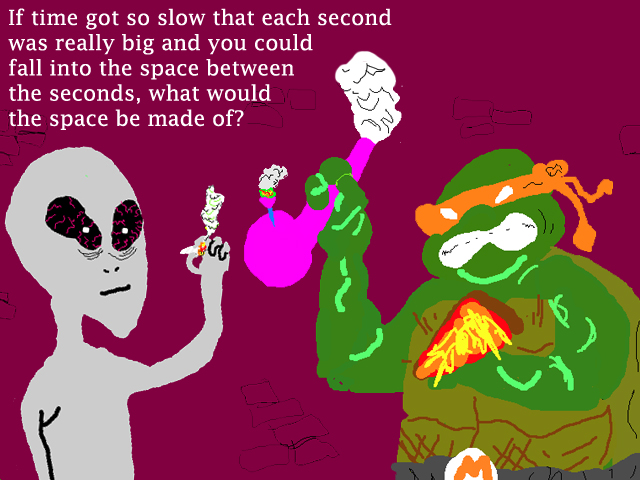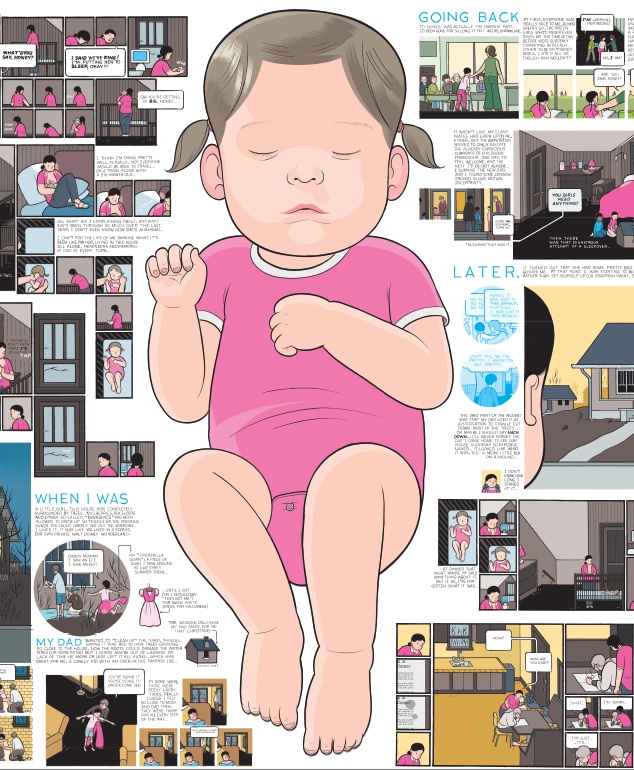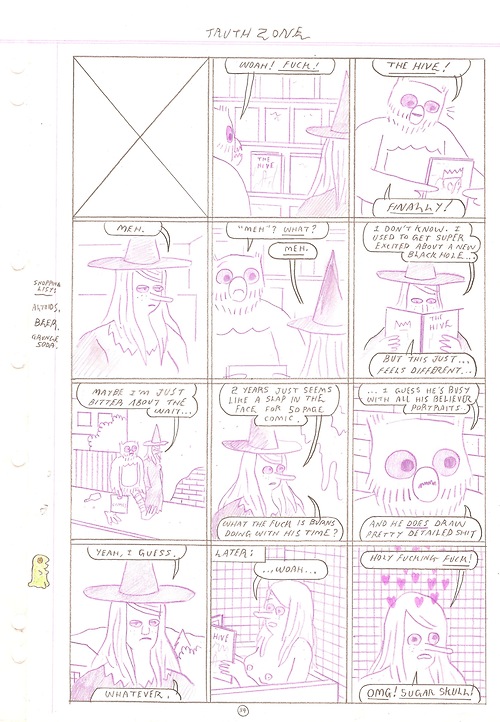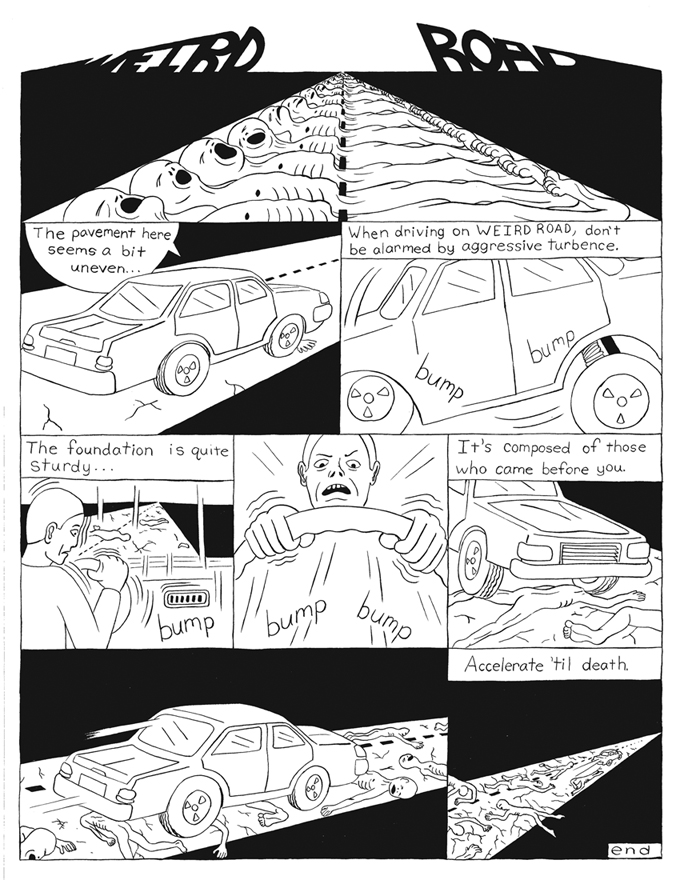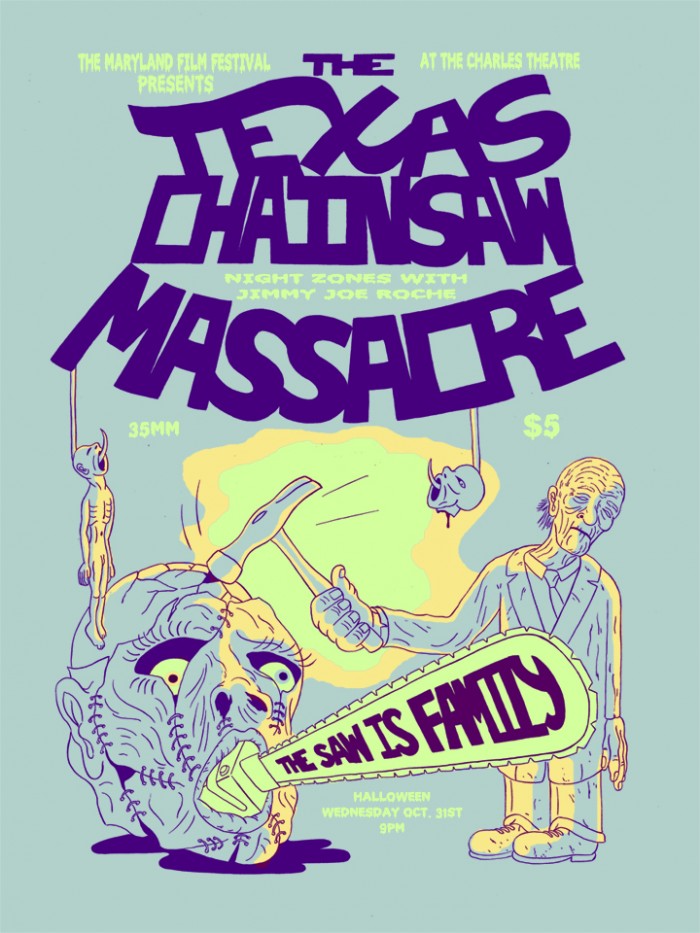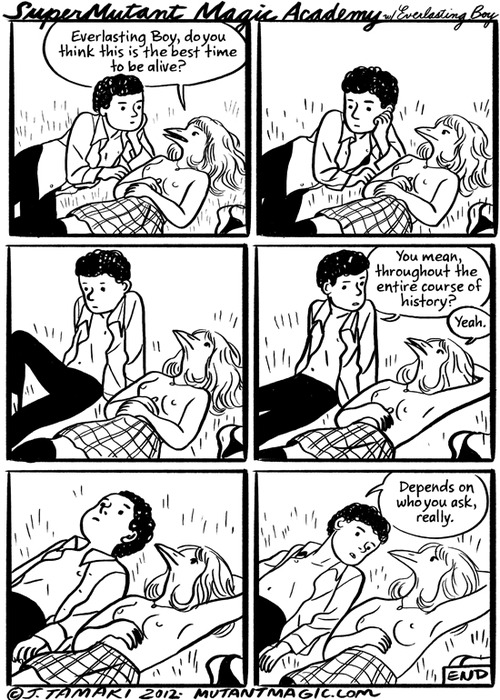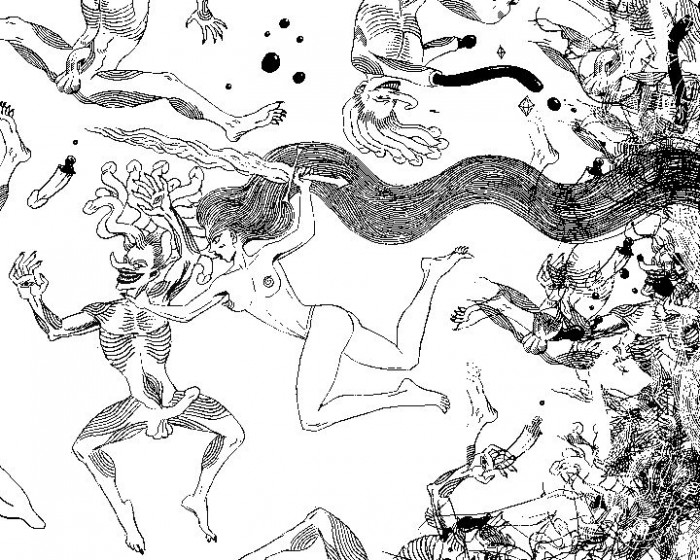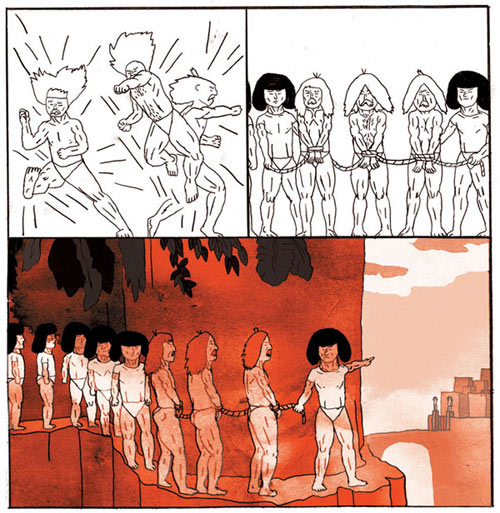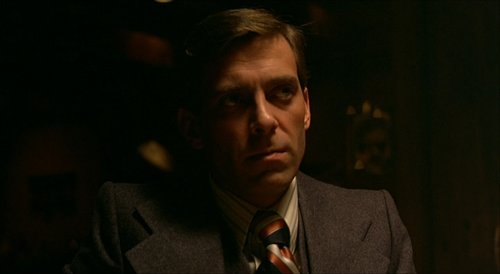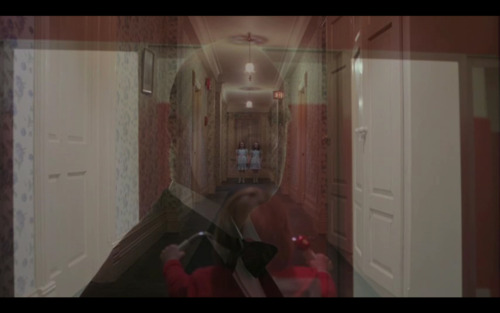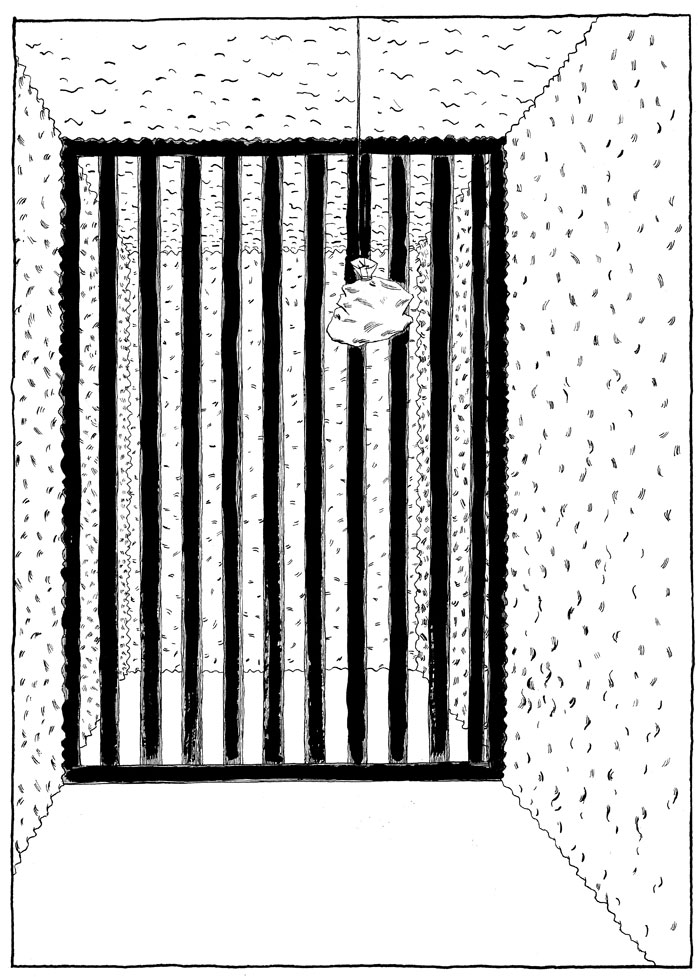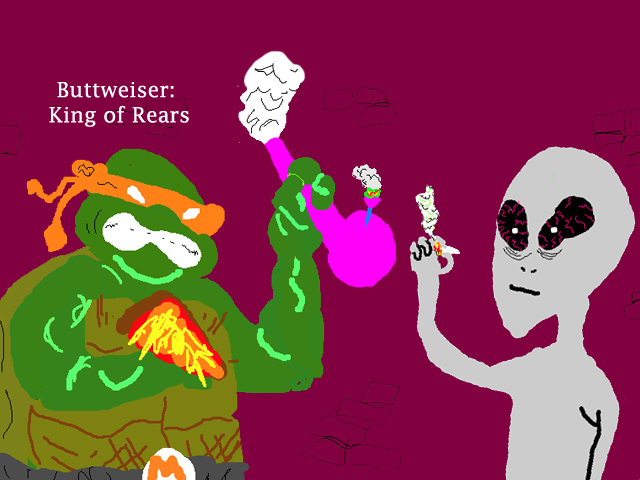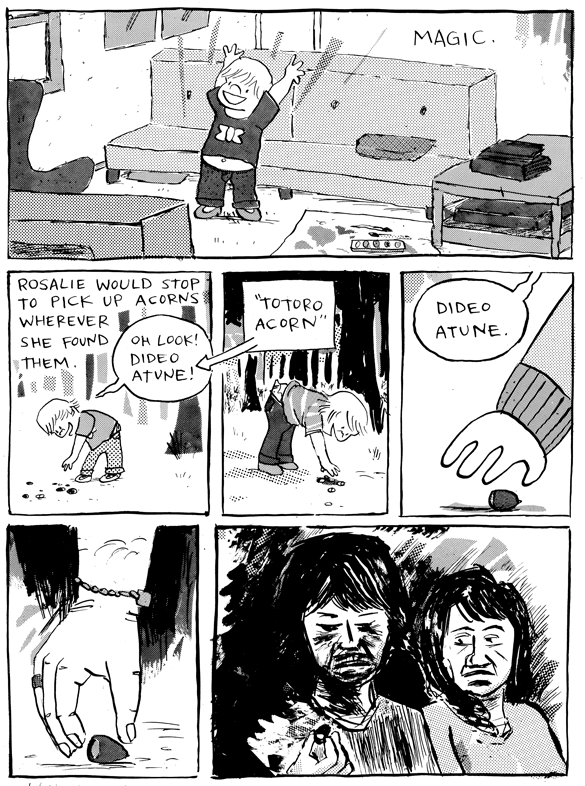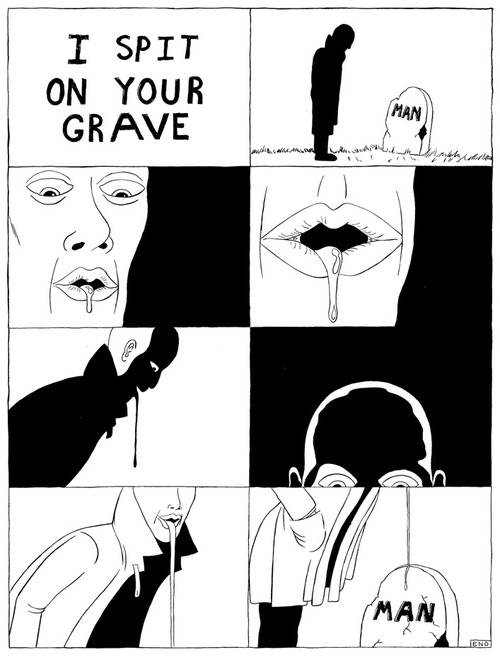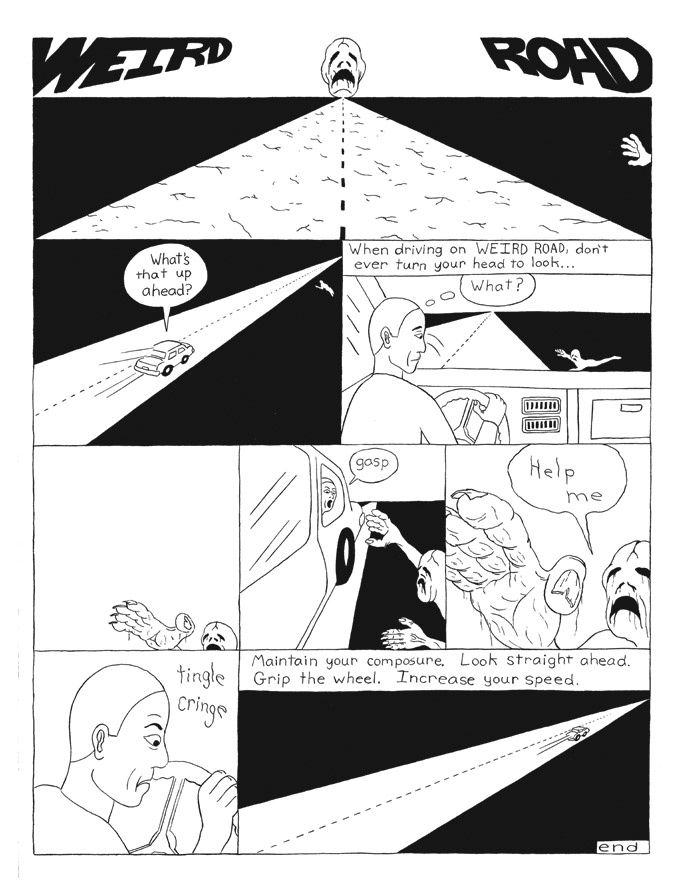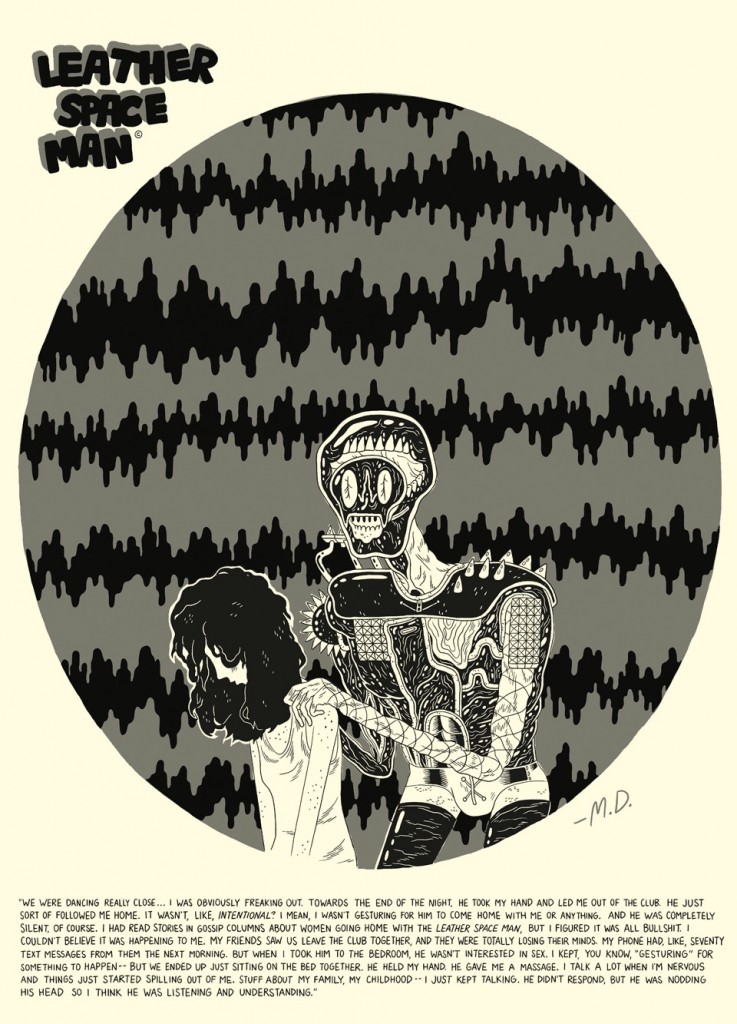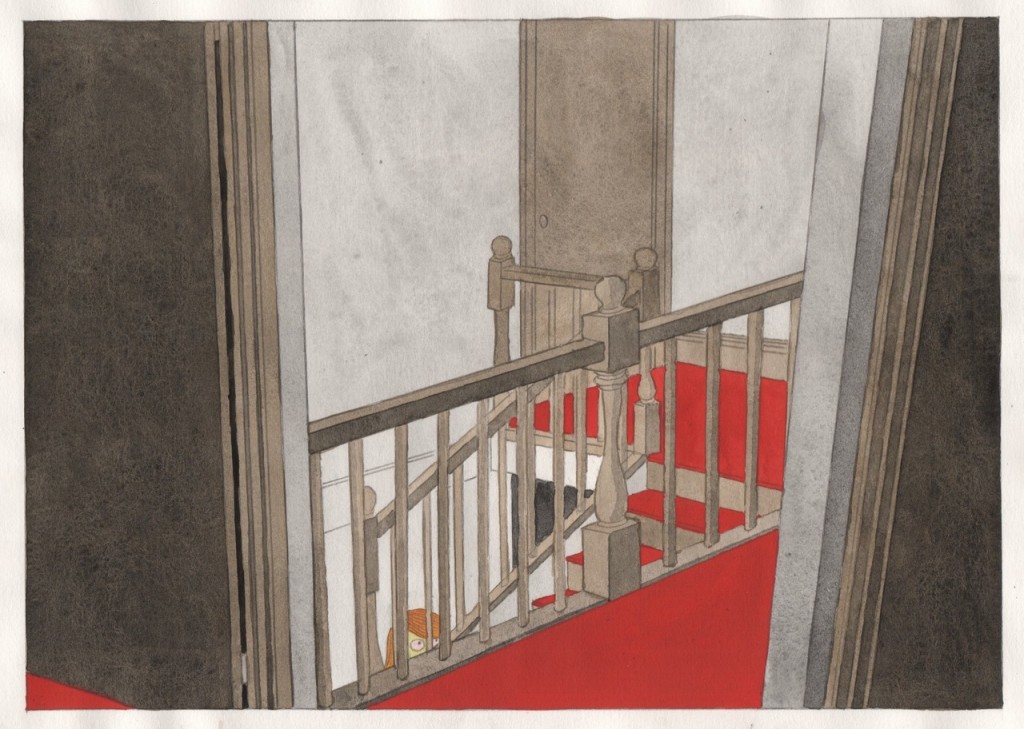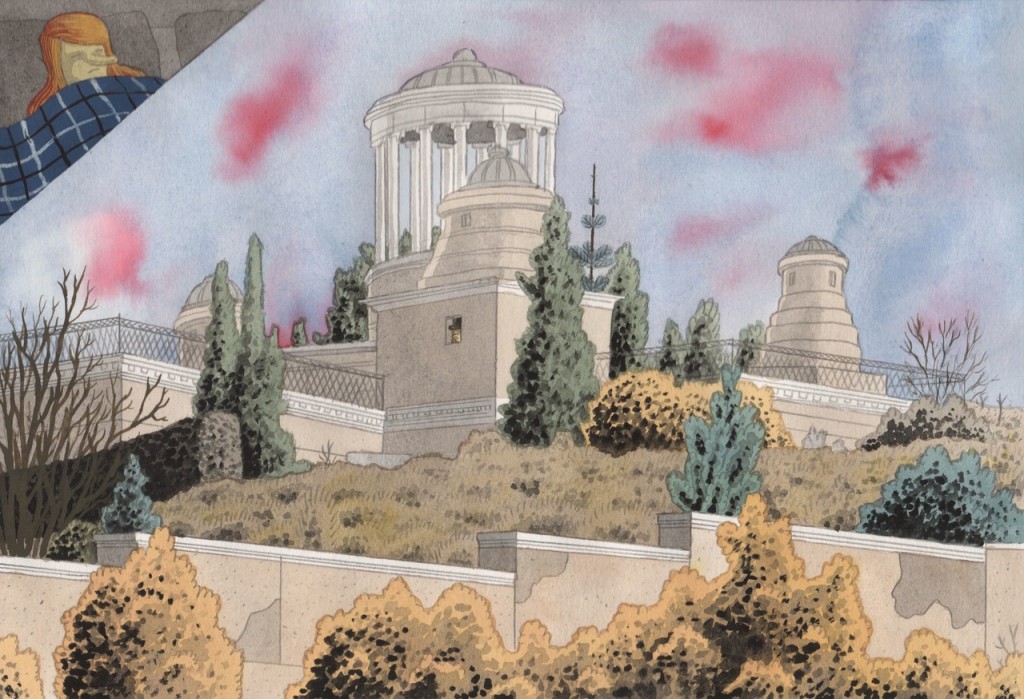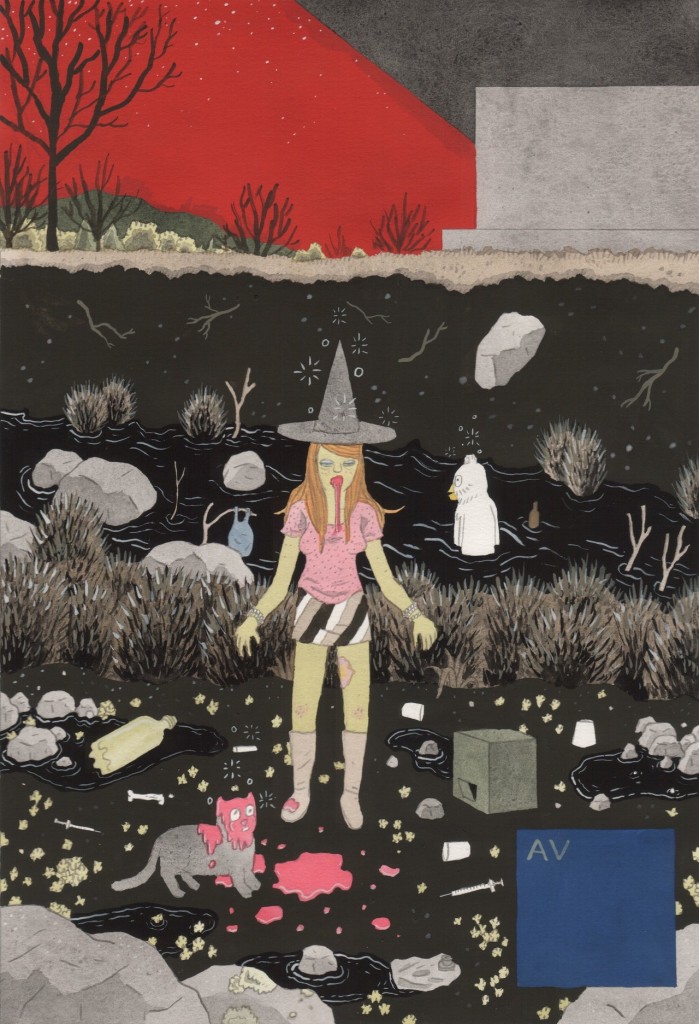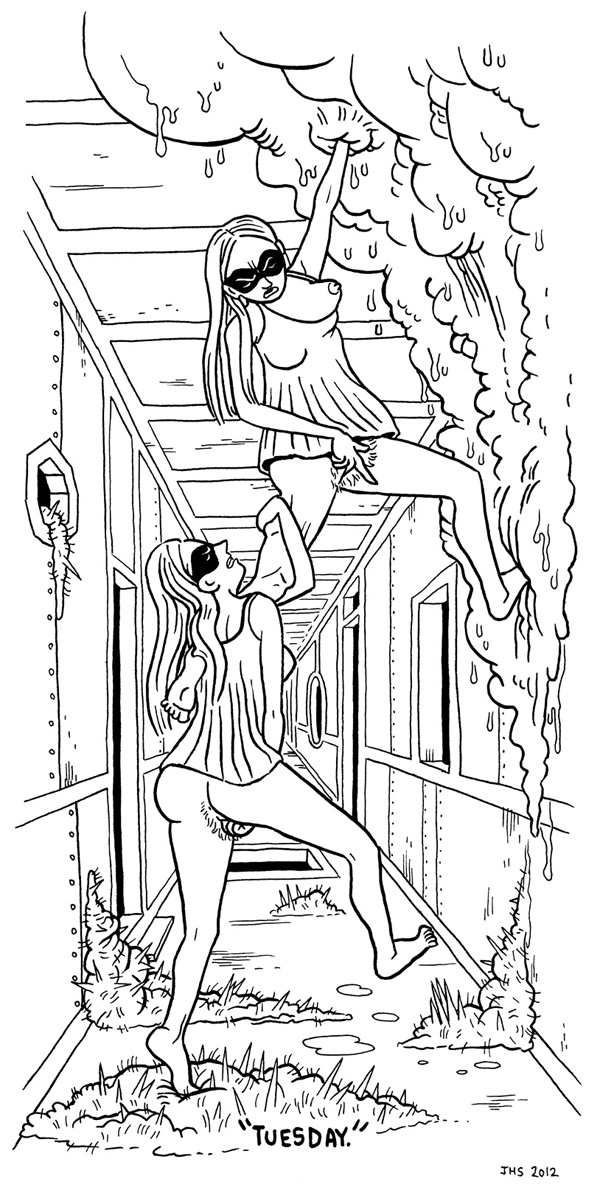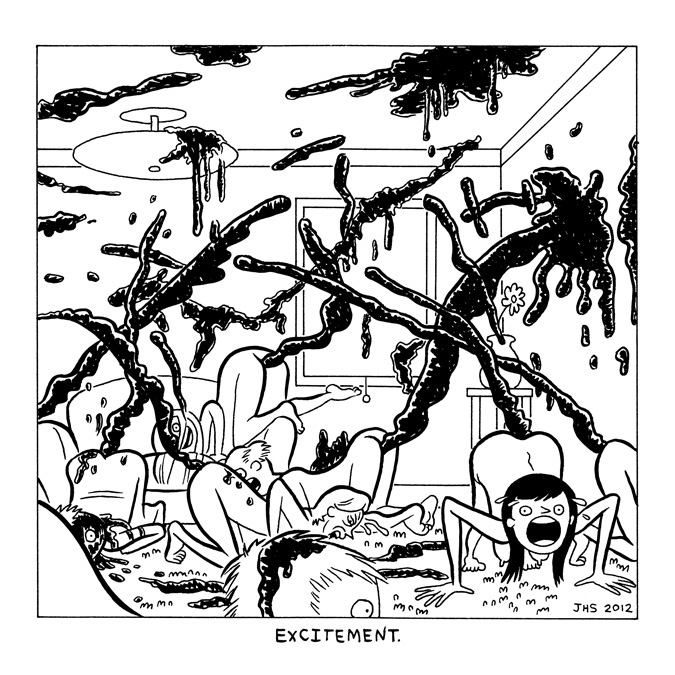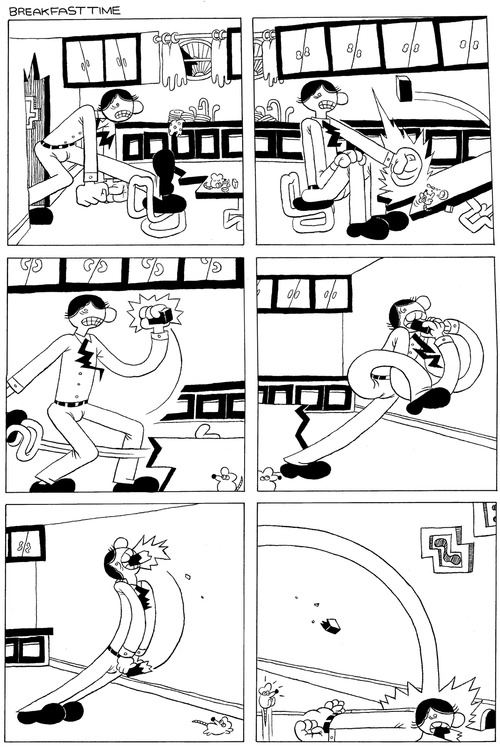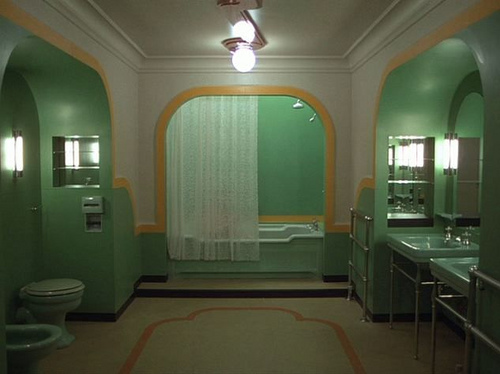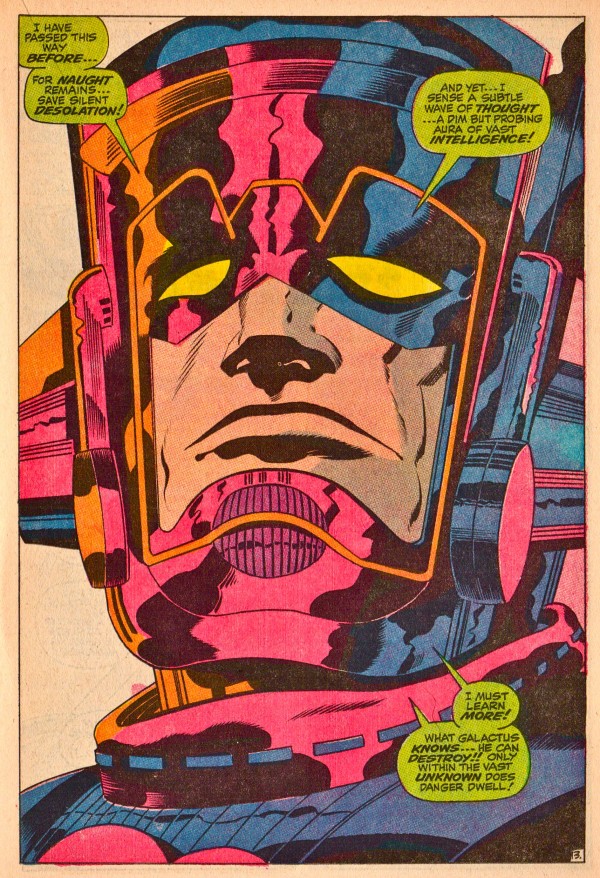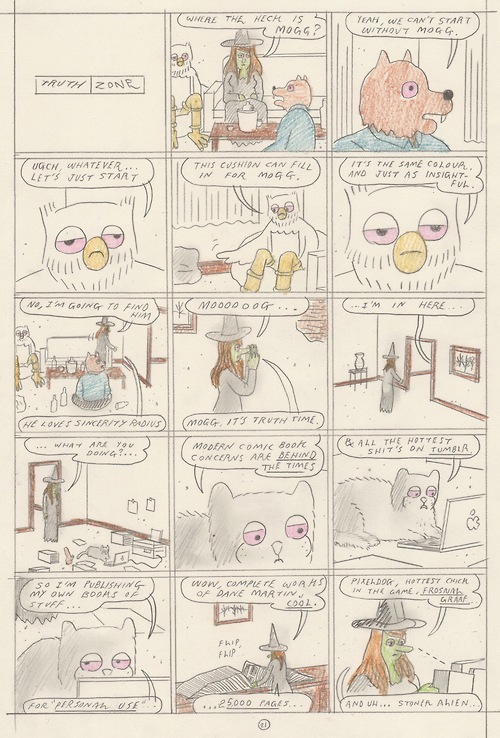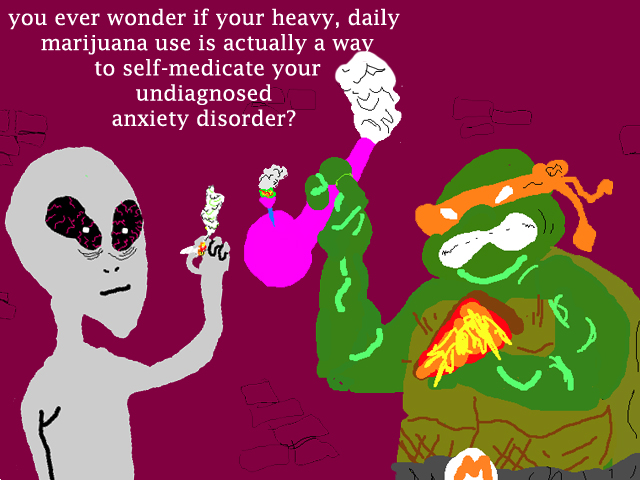Archive for October 28, 2012
“Homeland” thoughts, Season Two, Episode Five: “Q&A”
October 28, 2012“Boardwalk Empire” thoughts, Season Three, Episode Six: “Ging Gang Goolie”
October 28, 2012Last week’s Boardwalk Empire thoughts today!
* That scene in the Legion Hall gave me that Barton Fink feeling. Not the movie Barton Fink, but a play written by the character Barton Fink — stagey, overearnest, and political, yeah, political! What a funny vibe to go for.
* Some marvelously weird framing in this one: Margaret dismissing her guard who can be seen only through a window on the opposite end of the frame; Billie entering her apartment as viewed from some weird angle on the staircase. Because why not?
* For some reason, the enormous height differences between the singing Boy Scouts made me laugh out loud. That whole scene had this off sense of humor — I love the idea of the thoroughly corrupt Harry Doherty protecting his less than useless old Boy Scout buddy at all costs.
* Amazing how gross and disturbing a mere spanking can be now, isn’t it?
* I was just wondering where the DA played by Julianne Nicholson went! Now we know. Glad to see her.
Stoner Alien: Q&A
October 25, 2012The alien asks his turtle friend a couple of questions he’s not prepared to answer in the two installments of Stoner Alien I contributed today.
The Carnival of Souls Rides Again
October 24, 2012* It’s wonderful that we’ve had going on two solid weeks of non-stop Chris Ware Building Stories talk on the comics internet, though it’s also sad that I haven’t participated in any of it because I haven’t had the time to read the book yet. (I know, I know, be the change you want to see in the comics internet, but it’s a lot easier in terms of time, energy, and attention to blow through a few chapters of an inconsequential Secret Avengers arc and suchlike in dribs and drabs over the course of a couple weeks than to sit down and work your way through a 14-chapter box set by your absolute favorite cartoonist.) Stuff I’ll certainly be checking in on once I’ve done my due diligence: The Comics Journal’s massive series of Building Stories essays; Joe McCulloch’s suggested reading order for the “book”‘s 14 individual volumes; Joe McCulloch, Chris Mautner, Tucker Stone, and Matt Seneca’s podcast about the book; and Douglas Wolk’s review for The New York Times.
* A judge just handed the family of Superman co-creator Joe Shuster a major defeat in their battle to reclaim the character’s copyrights from DC Comics and Warner Bros. It’s an ugly situation where a 1992 agreement made in large part for Shuster’s sister to receive an annual pension which in today’s dollars amounts to less than an assistant editor makes in exchange for her claims to a billion-dollar character that gave birth to an entire genre of fiction is now being used against her. Read the link above for the best explanation of what happened, then read Tom Spurgeon for impassioned analysis. As Tom always points out, DC/WB’s treatment of the Superman creators and their heirs is a choice, one they make anew every day, and one they could reverse whenever they wanted to. Individual people have decided they don’t want to.
* Ben Katchor’s satires of late capitalist society for Metropolis are merciless. Fun fact: He’s got a collection of these strips called Hand-Drying in America and Other Stories coming out in February 2013! That’s gonna be a beast.
* The AV Club talks to Los Bros Hernandez at length. I love hearing them talk about how they spurred one another to improve in the early Love and Rockets issues.
* Matt Fraction looks back on his fine tenure on Invincible Iron Man, which is just about to wrap up. That’s one of the best superhero runs of the past half-decade.
* Andy Serkis (Gollum, King Kong, Ian Dury) is directing an adaptation of George Orwell’s Animal Farm. That’s exciting.
* I came up with the topic for Tom Spurgeon’s latest Five for Friday reader-participation feature: Name five female comics-makers and their best male characters.
* Mostly music critic Brandon Soderberg interviews the great horror comics creator Josh Simmons. No one goes as far out as he does.
* Mostly music critic Tom Ewing reviews Sean Howe’s Marvel Comics: The Untold Story, the other big recent comics-related book release I haven’t read yet.
* My blogfather Bill Sherman reviews Courtney Taylor-Taylor and Jim Rugg’s odd Kraftwerk/Gang of Four/Bowie in Berlin/Baader-Meinhof Gang comic One Model Nation.
* Haw, Benjamin Marra made a trashy funny-animal comic called Ripper & Friends! This oughta be a hoot.
* Mr. Freibert has leveled up.
* Effortlessly sexy teenage dreams from Jillian Tamaki’s Supermutant Magic Academy.
* This is my favorite Jonny Negron piece of the last little while.
* An Uno Moralez work in progress.
* Let’s find out what’s going on with Charles Forsman’s Oily Comics line.
* This 14-page downloadable pdf comic by Olivier Schrauwen is beautiful.
* One of the best things about Matthew Perpetua’s BuzzFeed Music is that you get a lot more Matthew Perpetua music writing. Here he is on two wonderful albums of recent vintage, Godspeed You! Black Emperor’s ‘Allelujah! Don’t Bend! Ascend! and Bat for Lashes’ The Haunted Man. These both make for excellent late-October listens, if you’re interested in that sort of thing, though I’m more in an emotional place for the former, which features a 20-minute instrumental metal epic named after a Bosnian Serb war criminal, than the latter, the key lyrics of which include “Thank God I’m alive” and “Where you see a wall, I see a door.”
* Also on BuzzFeed Music: Jayson Greene’s harrowing essay about being ceaselessly bullied. As a newish parent this shit really gets to me now, more even than as a former bullying victim. I get to toss my daughter into this maw? Fucking terrific.
* Katherine St. Asaph digs deep into the rise and apparent fall of “Call Me Maybe” singer Carly Rae Jepsen, whose album Kiss is Kylie/Robyn-level delightful but not selling.
* I’m with Noz on the quasi-parody rap critic Big Ghostfase. The schtick is overwritten, more than a little condescending, and ultimately unrewarding.
* The best horror writing you’ll find this Halloween month comes from Matt Maxwell’s bite-sized posts on George A. Romero’s Dawn of the Dead, which are all illustrated by absolutely gorgeous screenshots. Here’s one of them.
* Someone played The Shining from front to back and back to front simultaneously and claims the overlaps are meaningful. They’re meaningful only by coincidence, but they’re beautiful coincidences.
* Plenty of good writing on last weekend’s terrific Homeland episode out there, if you’re in the market for it: Willa Paskin, Alyssa Rosenberg, Matt Zoller Seitz (he and I are really in sync on this season), Alyssa Rosenberg again.
* Vulture’s Gwynne Watkins profiles Elio García and Linda Antonsson from Westeros.org. Those two mean the world to me and I just love this profile.
* Kimberly Kane talks to Zak Smith and Mandy Morbid about art, sex, porn, polyamory, chronic illness, death, and true love for Vice. Provocative and moving.
* Mark Bowden writes very well about how the military-intelligence apparatus tracks down and kills enemies of the state — this was true in his absurdly engrossing Killing Pablo, about the rise and fall of Pablo Escobar, and it’s true in this lengthy Vanity Fair excerpt/adaptation of his new book about the death of Osama Bin Laden. That said, if you believe the bubbemeise offered up here that Barack Obama wanted to capture Bin Laden and try him in court, but the Navy SEALs called an audible on the ground, established a “shoot all adult males on sight” protocol all on their own, and plugged a wounded and unarmed Bin Laden in the head where lay despite the entire national security team’s express wishes to the contrary, I’ve got a fucking bridge to sell you.
* The justification of America’s drone-strike policy offered by TIME columnist Joe Klein as discussed in this Glenn Greenwald post is so soul-deadeningly horrifying, so sick even by the degraded standards of America’s normal discourse on this issue, that I thought it bore special mention.
KLEIN: “I completely disagree with you… . It has been remarkably successful” —
SCARBOROUGH: “at killing people” —
KLEIN: “At decimating bad people, taking out a lot of bad people – and saving Americans lives as well, because our troops don’t have to do this … You don’t need pilots any more because you do it with a joystick in California.”
SCARBOROUGH: “This is offensive to me, though. Because you do it with a joystick in California – and it seems so antiseptic – it seems so clean – and yet you have 4-year-old girls being blown to bits because we have a policy that now says: “you know what? Instead of trying to go in and take the risk and get the terrorists out of hiding in a Karachi suburb, we’re just going to blow up everyone around them. This is what bothers me… . We don’t detain people any more: we kill them, and we kill everyone around them… . I hate to sound like a Code Pink guy here. I’m telling you this quote ‘collateral damage’ – it seems so clean with a joystick from California – this is going to cause the US problems in the future.”
KLEIN: “If it is misused, and there is a really major possibility of abuse if you have the wrong people running the government. But: the bottom line in the end is – whose 4-year-old get killed? What we’re doing is limiting the possibility that 4-year-olds here will get killed by indiscriminate acts of terror.”
Tribalism at its most repellent; a willful rejection of empathy for other human beings, even children, with cruelty so casual it’s astonishing to behold.
* Klein should be quite excited to learn of the Obama Administration’s “disposition matrix,” a codification and systematization of pervasive surveillance and extrajudicial killing, conducted in secret and intended to become a permanent fixture of the executive branch. The object of power is power. Won’t it be fun to vote for these people anyway, because this election is like choosing between cancer and a less aggressive form of cancer?
* In happier news, I still like Beyoncé.

Comics Time: 67 monthly comics
October 23, 2012A couple weeks ago I realized I hadn’t read a single monthly comic book series since August 1. That’s the longest I’ve gone without reading a comic from the industry’s serialized backbone since I started reading comics in earnest again in the spring of 2001. Looking back, there were many reasons why I took this unplanned sabbatical, some of which it shares with my deliberate step back from writing about comics at the same time, but “I don’t enjoy these comics anymore” was not one of them. It’s an odd, transitional period for serialized action-adventure pamphlet comics, the kind people call “mainstream”: Marvel’s longest and in some cases best runs are all about to come to an end as they shuffle writers to new projects en masse, DC’s New 52 relaunch appears to have pushed my old favorite Grant Morrison into winding down his titles as well, and the Image-led renaissance in non-corporate non-shared-universe creator-owned comics may not be equal to its hype but certainly provides ample opportunity to read finely crafted action-adventure comics far removed from the line-wide editorial diktats of the Big Two. There’s an end of an era feeling in the air, and depending on how things shake out there may never again be a time when I’m reading and enjoying as many of these comics as I would have been reading and enjoying during those two and a half missing months.
So over the past two weeks or so, I crammed. Here are my impressions of the 67 comic books I read during that time, written in the order I read them. They’re all books I either have an established track record of liking or new titles I thought sounded interesting, so the result probably isn’t a useful portrait of What’s Not Working in Monthly Comics Today. The stuff I knew wasn’t working, I stayed away from. But I definitely didn’t end up liking everything I thought I’d like, and ended up liking some things more than I expected, so there are a few surprises in there.
Before I start, let me note for the record that this is absolutely the way to read these things, if you can help it: binge on them in big chunks. The serialized monthly comic is an almost uniquely inefficient and cost-ineffective art-delivery mechanism, so anything you can do to stack the deck in the favor of a satisfying single-sitting reading experience helps.
Avengers vs. X-Men #10-12, AvX VS #5-6: I liked this thing. It was certainly the best non-Final Crisis major line-wide event comic since Infinite Crisis kicked that era off. Wrapped up a lot of narrative and thematic threads from throughout the nu-Marvel era in fairly organic and enjoyable fashion. The action was engaging and intelligible, aside from a couple of weak spots (Bendis can’t write action and Coipel can’t draw it). The all-fight spinoff comic was a terrific idea–pure fluff, and a million times better than seeing the umpty-umpth splash-page melee with people shooting lasers in all direction that constitutes way too much superhero-comic action these days. I even liked the overall tonal progress of the series, how it went from being very much in line with Bendis’s usual seen-it-before military-superhero stuff to an X-Men mutant dystopia to a war of the gods, with the heroes flying and teleporting around from mystical cities to floating island prisons to Limbo to the moon, conducting their fights literally above the heads of the hoi polloi. Cyclops killing Professor X is a great story beat and I actually think this editorial/creative regime will make it stick for some time. And man, was it an orange book by the end. When I think of this series I’ll think of fire in the sky, which sounds really overdramatic and cheesy now that I’m typing it out, but it’s really not a bad look for an event comic to have a prevailing, lingering mental palette like that, one that overlaps with the overall tone and theme and story. If you’re predisposed to shit on this sort of thing nothing here will make you change your mind, but I’m almost always up for a good time at the movies and that’s what this provided me.
Action Comics #13 & #0: The bloom’s off the Morrison rose and he has no one but himself to blame, between a take on the Superman Year One concept and character that has never quite clicked, a relationship with the artists on this title that also hasn’t clicked, and a series of lame dodges and venal fuck-you-I-got-mine responses to creator’s rights issues either brought up by interviews or offered without prompting in his book Supergods. That said, these two issues contained my favorite aspects of Action Comics so far: the relatively convincing relationships between Clark Kent, Lois Lane, and Jimmy Olsen, here portrayed as young journalists getting a start in the big city by attempting to make uncompromising work, characters of a sort you basically never see; and done-in-one All Star Superman-style run-ins with Kryptonian villains, in this case the first criminal sentenced to the Phantom Zone. The art by Travel Foreman was memorably burned-looking, the take on the Phantom Zone creepy and unpleasant, and I’m a mark for Krypto stuff. It’s hard to take Morrison stories about the unbeatable power of good over evil when he abdicates any and all responsibility to behave ethically toward his peers and forebears IRL, but sometimes artists can lead you to the promised land but not enter themselves and that’s okay. Atheists write lovely hymns sometimes.
The Walking Dead #102, Michonne Special, and #103: One of the nice things about this series is that it can set up a new status quo, like Rick convincing his community of survivors to surrender to a more powerful and dangerous rival community, and you know Kirkman will have the follow-through to stick with this new status quo for, potentially, a year or more, and that when time’s up it won’t just get restored to the status quo ante. You can put up with a lot for that sense that “hey, this matters.” Over in the Michonne Special, which seamlessly edits an origin story written and drawn for Playboy (!) into a reprint of Michonne’s first appearance in the series, it’s striking how much Charlie Adlard’s art has changed from what looks now like an attempt to ape previous artist Tony Moore’s expressive, definitively delineated oblong faces into his own loose moody gray thing.
Uncanny Avengers #1: This is 99% set-up for future storylines, and said set-up is 99% angry superheroes telling each other how disappointed in each other they are, which I’d be happy never to read again. Rick Remender is an entertaining superhero team writer but much more so on certain titles than others, and this is an inauspicious start.
Powers #11: I was all set to say “so much time goes by between issues of Powers that you forget why you’re reading it anymore” but this issue was involving and lovely, with big breathless layouts in the big smackdown of Walker and Triphammer vs. some giant green god-thing and a moment that tied together years of storylines I’m surprised I remember. I see they’re going to relaunch the thing yet again as Powers Bureau, and we’ve seen this movie before: three or four on-time issues, then waiting five months each for the final two installments of the initial arc, then reading that Bendis and Oeming are back with a vengeance for the all-new story arc. I don’t look forward to the waiting or the fingers-crossed promises, but I do look forward to the reading. I wish Bendis would drop the assignments and the TV pilot that prevent him from putting out more of this, at a rate sufficient to help us forget we’ve seen a lot of these story beats before.
Invincible Iron Man #523-526: Not everything works in Matt Fraction and Salvador Larroca’s lengthy Iron Man run—the supporting cast at Tony Stark’s company resilient never distinguished themselves beyond “the people Tony and Pepper Potts banter with at meetings,” the stunt “casting” of, say, Nicole Kidman as Pepper lessened as time went on but was still distracting, and the less said about Tommy Lee Jones The Cussing Dwarf the better. But most of it worked very well indeed. Larroca’s art and Frank D’Armata’s colors look every bit as shiny and candy-coated and slick and future-ish as they ought to; nothing else in superhero comics looked like it in turn, that much I can say. Fraction gets Tony Stark as well as anyone this side of Robert Downey Jr., his intelligence and ego the only things that can get him into the scrapes he gets into AND get him out of them again — a great fit for Fraction as a personality based on what I can gather. Fraction’s Stark is just a pleasant character to spend time with. Plus there’s simply a lot to be said for guys in armor flying around punching each other. Even the Mandarin’s off-brand version of supervillain megalomania is compelling. This is one of the most consistently enjoyable superhero runs of the past decade, and I’ll be glad to see it end in a month or two only in the sense that then I can have a complete run of it.
Winter Soldier #9-11: Speaking of lengthy runs that are about to wrap up, Ed Brubaker’s tenure on Captain America and its assorted spinoffs is nearing the finish line, too. Just a wonderful match of writer to character, even if everything after Steve Rogers’s return from the dead has felt a bit like gilding the lily. The artists on the main title have strayed from the visual template established by Steve Epting and Mike Perkins back in the day, but here, Butch Guice is working right in that “naturalist depictions of superhero antics” sweet spot that made Bru-Cap the perfect blend of black ops, superspy, and Star-Spangled Avenger. Most of the time, at least — other times it looks like he’s just tracing photos to save time. It’s weird, how dramatically it shifts. Nice colors from Bettie Breitweiser, though, working in the teal-and-orange palette of Jimmy Corrigan’s cover and simultaneously muted and garish at the same time. Kind of glo-fi on occasion. Finally, Black Widow fights Bucky while wearing a ballerina costume.
Invincible #94-95: Here Kirkman gives us a sort of My First Sony version of the old sci-fi trope where centuries pass for characters stranded on an alien world while they and the Earth they come from barely age at all. The disconnect between the immensity of that experience and demeanor of the characters involved is so massive it’s all but played for laughs, but given the fact that these are two very much supporting players and yet the book is still spending issue after issue on this story, it’s still an entertaining example of Kirkman’s willingness to both go big and go offroad. Series co-creator Cory Walker draws the alien-world stuff; I think his design for the grown-up Amanda Monster Girl is hella cute. I’m always glad to have read Invincible when I put it down because I never know where it’s headed when I pick it up–I certainly didn’t see this storyline coming. Who could’ve?
B.P.R.D. Hell on Earth: Return of the Master #1-2: Tyler Crook had the thankless task of following the great Guy Davis on this title (literally thankless in the sense that Dark Horse barely said boo about Davis’s departure–I still scratch my head about that) and preceding the tour de force monster on monster combat story arc illustrated by James Harren. So you can hear the collective kvetching when he’s on duty. But his work is just fine — not as creepy as it should be, perhaps, but very expressive, which was always the other big tool in Davis’s arsenal. I’d rather have good acting from the characters than super-scary visuals, frankly — it’s made the relationship between the secretly evil Russian zombie guy and his imprisoned immortal-little-girl predecessor at the top of Russia’s BPRD equivalent a lot of fun to watch, for example. Anyway I feel like the best thing for the Hellboy/BPRD saga would be for it to end in the middle-term future — it’s been a marvelous, unpredictable, evocative ongoing series but it needs a true ragna rok to stick. Hopefully we’re headed there.
Lobster Johnson: The Prayer of Neferu: You could go either way with these Hellboyverse spinoffs and say that their tangential relationship to the main story helps them — they’re looser and freer and less burdened by a sense of building to a climax that never comes — or hurts them –it’s not the character-based Lovecraftian good stuff so who cares. I guess I’m in the former camp for this one. Wilfredo Torres’s faces are a bit too obviously photoreffed but ooftah, that line of his! Loose, thick, luminous, lively. Shades of Dave Stevens, maybe. Meanwhile, Lobster Johnson crashes a party full of gangsters and reincarnated Egyptian occultists and sticks around until he’s managed to kill all of them, then leaves. Ruthlessly efficient.
Uncanny X-Force #29-32: Four issues in two months. This doesn’t bother me like it’s bothered a lot of people, since I haven’t seen any dimunition in the quality of the stories Rick Remender’s telling, and the art, while inconsistent, is always competent and almost always colored by Dean White, one of the best in the biz and the book’s aesthetic lynchpin. Granted, though, he’s less in evidence by the end of this little run, and that’s a loss. Anyway, no, generally I’m fine with lots of Uncanny X-Force. This run made me realize how much Remender is willing to stack the deck against his own theme. The idea behind Uncanny X-Force is that violence poisons the souls of those who commit it, even for the right reasons — and not in the usual, hardass, “down these mean streets a man must go”/”you want me on that wall” way that books starring the Punisher and Wolverine usually approach this stuff. No, all the characters here, their lives are legitimately worse than they were before they signed up, and they know they have only themselves to blame. The interesting thing there, though, is that Remender pursues this theme in the face of antagonists who are just out-and-out monstrous psychopathic villains with “does what it says on the tin” names like Apocalypse, Dark Angel, and the Brotherhood of Evil Mutants. (He’s done the same thing in Secret Avengers, too, resurrecting the Masters of Evil.) X-Force’s opponents either have evil in their name or preside over alternate realities where the consequences of not stopping them are visible everywhere. Yet the message, that engaging these thoroughly awful murderers by murdering them in turn is wrong and destructive, remains. It’s exciting to see someone willing to make extra work for themselves to make their point stick.
Batman Incorporated #3 & #0: Morrison’s still got the fire here, I’ll say that much. Obviously having Chris Burnham and Frazer Irving in your corner goes a long way toward creating that impression — Burnham’s taken Frank Quitely’s pointillist approach to action and made it his own, and Irving can just do so much with so little, from boiling chase sequences down to figures made from little shapes of color to drawing gorgeous Jonny Negron-style hip ladies getting down. But the story itself remains engaging, giving the impression that you’re about five feet away from being able to see the whole picture, but it keeps advancing right along with you to keep the answer to the mystery tantalizingly out of reach. That’s how Morrison’s been handling his conspiracy-based Bat-run for years and years now, and it remains an electric read, even if his concept of a corporation dedicated solely to do-gooding now reads like pure projection. Or perhaps it’s not “even if” but “because,” I don’t know.
Happy #1: We all get it: Morrison’s doing a parody of Mark Millar and Garth Ennis, with Ennis collaborator Darick Robertson riding shotgun. That’s nice, I guess, but as far as this first issue is concerned, it’s all set-up and no subversion. It simply reads like a undistinguished example of what one assumes he’ll be sending up in a more ambitious fashion by series’ end. It’ll be a bit of a slog getting there with these undistinguishable foul-mouthed hardasses vomiting f-bombs at each other. Still, I like Robertson’s art well enough — maybe it’s just reading this and Batman Incorporated back-to-back that did it, but now I can see his influence on Burnham, and that influence is reflected back in a way that makes me appreciate him more.
Secret Avengers #30-32: Compared to writer Rick Remender’s similarly structured Uncanny X-Force, there’s just…not a lot going on here. The closest it gets to a theme is the use of Marvel’s various android characters for a look at what makes us human, an issue I’ve never felt compelled to grapple with, seeing as how the question is basically answered every second of every day you get up in the morning. Nominally this storyline is the payoff to a grand mystical conspiracy introduced by Ed Brubaker in the inaugural arcs of the series before he realized he doesn’t like writing team books and bailed, but the payoff is a dud — literally, pretty much, as nothing happens when the archvillain pulls the trigger on the superweapon he’s spent the entire series to date preparing. The figurework by Matteo Scalera is scratchy and elastic in a way that softens the impact of the black-ops and hand-to-hand combat that drives the story. It’s inoffensive, and occasionally fun, but extremely slight — exactly what I’d worried it would be after that initial preview issue back when, and impossible to overlook now that it’s not being papered over by the lovely cosmic artwork of Renato Guedes and Bettie Breitweiser from the Avengers vs. X-Men tie-in arc.
Lobster Johnson: Caput Mortuum: And this one is super-duper slight, yet its mere presence in the Mignolaverse, the implacability of its lead “character” (Lobster Johnson is something of a deliberate cipher), and some exciting action stagecraft played off of Tonci Zonjic and Dave Stewart’s solid and efficient artwork make it feel like a much more worthwhile affair. It’s weird to read a Hellboy/BPRD-related book without a single hint of the supernatural — this is just a vigilante against Nazis with an advanced chemical weapon — and that may speak to the overextension of the concept generally, but not enough to complain about the particulars.
Captain America #16-18: Well, this is a bummer. After a near-decade run that was arguably the best in the character’s history, Ed Brubaker hits the eject switch from Marvel in favor of TV projects and creator-owned stuff, and in the confusion a co-writer is roped in to handle his final full arc on the title, which seems to mean scripting off of Bru’s plot. So a long-running storyline about Cap’s primary antagonist for the past year or so is basically taken out of Brubaker’s hands, with even his trademark, claustrophobic narrative captions removed, and the result is just unspectacular superhero boilerplate. Doesn’t help that artist Scott Eaton isn’t elevating the material, although the menagerie of three inkers and two colorists he’s saddled with in issue #16 don’t exactly give the impression that this is the thought-through product of a singular vision either. I believe Brubaker’s getting his very own farewell issue, at least, but this is a pretty depressing example of Marvel’s need to move product trumping what had been one of its creative highlights for literally years. If you’re keeping track, it’s much worse a sin than the cast of thousands necessary to make Uncanny X-Force a biweekly title, but way better than Brian Bendis being forced to unceremoniously kill off Ultimate Spider-Man after well over a hundred issues and replace him with an interesting character hamstrung by a gross tribute to union-busting school-“reform” propaganda film Waiting for Superman because Mark Millar tossed out the phrase “Death of Spider-Man” on his way out the door of a creative summit.
Prophet #28-29: This series has been just fantastic, a most welcome addition to the few, the proud, the “who knows what the hell’s going to happen when you open any given issue of this book?” monthly series. Deadly serious yet never humorless — a trick known to its pulp antecedents (it’s very much Space Conan) but hard to pull off in the present day. The scale of this “literature of ideas” take on SF is just phenomenal — all the concepts are just so big! It’s the universe as a massive, rotting body, with each individual alien or warrior or creature or robot the tiniest of molecules in the tiniest of cells in some small organ or digit somewhere, locked into a life-and-death drama with no sense of its own inconsequentiality relative to the grand scheme of things. It’s actually rather breathtaking. The rhetoric surrounding the comics of Brandon Graham, who here is “just” the writer where elsewhere he does the lot, has been messianic enough to make the most ardent Grant Morrison fan blush (I know whereof I speak there), and I personally bristle at his boilerplate Chris Ware disses, but there’s no sign of any of that affecting his work for the worse here. Even his use of puns, perhaps his greatest vice elsewhere, is judicious and illuminating (“mind field” instead of “mine field” is the main one here, and it’s an evocative and informative turn of phrase). Graham has a stable of talented off-model sci-fi artists to work with, though the standout here is the stunning gray-white color work of Joseph Bergin III and Charo Solis in issue #29. Realizing the connecting thread to the series’ done-in-one format was one of my favorite eureka moments in the past couple years of comics, and it continues to be one of the book’s great delights. Simply a pleasure from start to finish.
Fantastic Four #609-611 and FF #21-22: Writer Jonathan Hickman wraps up his long-running, interlocking dual Fantastic Four series with a series of one-shots and two-parters dedicated to individual subplots and supporting characters. That’s a fine note for the series to end on, as I’ve always been much less impressed by its long-game clockwork narrative structure — for all the breathlessness of Hickman’s writing this has always felt like an academic exercise to me, tied neither to a Morrisonian sense of creepy mystery nor a Moore-style autopsy of humanity’s inevitably failed attempts to remake the world in its own image — than by the way it simply places likeable characters with fun powers in close proximity with big cosmic superhero sci-fi ideas. It’s tough to go wrong with that, or at least it should be. I like Hickman FF less than Fraction Iron Man or Brubaker Cap, but I still like it, and as with those other series I’ll be glad to have The Complete Jonathan Hickman Fantastic Four &c on my bookshelf.
Green Lantern #12, Annual #1, #0, and #13: I’ve always thought Geoff Johns’s Green Lantern run works because a) he cracked open the concept and found a whole new world of possibilities inside, and b) those possibilities stem from the childlike simplicity of “what if there were other colored power rings?” which is pure inner-eight-year-old gold. But this recent stretch of GL books (and good luck figuring out what to read in what order, all those new readers attracted to comics for the first time by the New 52, we know you’re out there) makes me realize something else that’s going on here: Green Lantern is a daytime soap opera, but instead of rival families, there are rival lantern corps. There’s that same neverending roundelay of emotionally pitched, for-all-the-marbles confrontations that, miraculously, just seem to break down and reconstitute themselves with a different alignment of the players a few months later down the line. Right now, Hal Jordan and Sinestro are allies against the Guardians, who are using Black Hand in a plot against all the lanterns. A few months ago Hal and Sinestro and the Guardians were united against Black Hand. Before that Hal and the Guardians were united against Sinestro. And so on and so on. I like these characters and concepts, and I like the artists who draw them (particularly Doug Mahnke, who gets a nice glory shot of the Justice League on the final page of #13), so I’m up for watching the kaleidoscope shuffle and realign. As a side note, the last couple issues see the introduction of a new Arab-American, Muslim Green Lantern, who is recruited by Hal and Sinestro’s shared power ring while he’s in the middle of being wrongfully accused of, and tortured for, terrorism by the American government. That’s a super-duper progressive superhero origin, and one that’s likely to be a lot more timeless than Greg Rucka’s Batwoman character becoming a vigilante after getting bounced out of the military under Don’t Ask Don’t Tell. Depending on whether you choose to emphasize the progress of gay rights or the rise of open Islamophobia, this is a real half-full/half-empty situation.
Marvel Now Point One: This is an anthology one-shot featuring various prologue short stories by various creative teams of various upcoming titles. I’ve read around 40, 50 monthly comics in under a week at this point in this little project, and I could make heads or tails out of a grand total of one of these stories. (The Fraction/Allred/Ant-Man one, a teaser for a future Fraction/Allred FF book I won’t be reading because Allred did a variant cover for Before Watchmen, which is the same reason I’ve dropped Mark Waid’s Daredevil now that Before Watchmen cover artist Chris Samnee is the regular artist. Both of these men can get out of Before Watchmen Scab Limbo by donating their proceeds to charity, Paul Pope style!)
B.P.R.D.: 1948 #1: This is the first BPRD comic to spook me in a while, mainly because I find the thunderbird legend deeply unnerving. The idea that even as well-trod a territory as America is big enough to house a relict population of birds the size of a city bus…I don’t know, it’s like staring into the ocean or the night sky in some way. The bird in this BPRD comic isn’t a bird at all, mind you, it’s a cthulhoid monstrosity of the Hellboy/BPRD kind, but it’s playing with thunderbird imagery and it’s creepy. I like it.
Godzilla #4-5 and Godzilla: The Half-Century War #1-3: If you’d told me this time last year that I’d soon be reading not one but two beautiful, rollicking comic book series starring Godzilla and drawn by artists on the alternative-leaning side of indie comics, I never would have believed you, but lo, it has come to pass. I never talk about this for some reason, not even relative to stuff like He-Man or G.I. Joe, but I was a huge, huge Godzilla fan as a little kid, with the stack of VHS tapes featuring three movies taped off Channel 11’s Saturday matinees per tape to prove it. These comics do what those movies did: Create reasonably engaging human characters to provide a worm’s eye view of these giant, magnificently designed and imagined forces of nature as they wreak havoc and attack each other. The main title, written by Duane Swierczynski, is sort of the action-comedy/tween-boy animated-series version of the concept, starring a not-at-all-veiled Jason Statham figure as he and his team fly from place to place, taking down giant monsters for large sums of cash. It features the art of Simon Gane, which looks like it was assembled by tracing the wrinkles on crumpled-up aluminum foil, and I mean that in the best way. The monsters look solid, and they pop off the rubble and explosions. Even more impressive is the James Stokoe written/illustrated Half-Century War, which reads like what it is: An already talented and established cartoonist given the reins of something he loved as a kid and given carte blanche to do his own thing with it. This one’s slightly more serious in tone, in the way that monthly action-adventure comics can be “serious,” but it’s primarily a fun-for-fans Ultimate Godzilla, or maybe Marvels Meets Godzilla, that plays with the timeline established by the Toho movies in a sort of real-time way. There are a couple of spreads — the debut of Godzilla’s trademark sound effect and a giant-monster battle royale — that made my jaw literally drop.
Batwoman #12, #0, #13: An unnecessarily beautiful series, co-written and illustrated by J.H. Williams III with color by the amazing Dave Stewart. I mean, this thing…Batwoman has an enormously overcomplicated history in her few short years thanks to co-creator and original writer Greg Rucka’s fondness for some truly dopey ideas, some of which (the half-animal guys that are the rare thing Williams is bad at drawing) linger to this day, but holy god is it a thing of goth glamour and splendor. The reds in the zero issue are worth buying the damn book for. Twelve and 13 are done almost exclusively in two-page spreads, because why not? There’s a spread where Batwoman and Wonder Woman burst out of the goddess of night’s lair by lighting a match that made me say “Jesus!” out loud, it was so stunning. I’m basically sticking with this book on the off chance my daughter turns out to be a Hot Topic shopper in her teens, because this is really remarkable for that demographic, and purely in visual terms for me as well. They really ought to do whatever it takes to prevent anyone but Williams from drawing it, though. (PS: Regarding something I mentioned earlier, I notice they’ve now begun glossing over the fact that she was drummed out of the military by Don’t Ask Don’t Tell, instead simply saying she was kicked out of West Point.)
Glory #29: Joe Keatinge and Ross Campbell’s contribution to the same Rob Liefeld reboot line that spawned Prophet is goofily beautiful — there’s a panel of the main human character Riley smiling as her hair’s black tendrils blow in the chilly wind that I sat and looked at for a solid minute — and the character designs reveal Campbell to be just as proficient with genre body types as he is with the skinny/chubby/everything-in-between goths in his moody slice-of-lifer Wet Moon. This one actually has a couple of post-coital scenes, which means you get to see his hulkingly muscular version of the title character, who used to be just kind of a Wonder Woman knockoff from what I understand, in all her glory, and it’s a hilariously transgressive image. It’s tough to say where this series is headed because there’s always this disconnect between the calm demeanor of the characters and the inevitable slaughter they’re constantly talking about being headed toward, but it’s a really attractive book in the meantime.
Fatale #7-8: This is the first disappointing Brubaker/Phillips collaboration I’ve read. The combination of supernatural horror and noir just doesn’t work: the past-tense neurotic noir narration smothers any potential to present a super-rational shock in the moment, Phillips isn’t really a natural when it comes to framing horrific imagery, and Brubaker’s giving him basically nothing to work with beyond “spooky guys who sometimes have Cthulhu heads.”
Mars Attacks #3-4: Good clean fun. John Layman and John McCrea take the BEMs from the gruesome old Topps trading card series and let them run amok among various action-movie and alien-invasion cliches. This feels like someone’s action-pastiche comic you picked up at BCGF, only it looks like a book that runs in the front of Previews. That’s a fun feeling! These issues featured giant praying mantises eviscerating a college class, and that made me laugh. Very much in the vein of the Godzilla series also published by IDW. I could stand more books like this, sure. Cheap pulp kicks.
Hawkeye #2-3: I hate to use the term Mary Sue, but suddenly Hawkeye’s a down dude who lives in Brooklyn where he attends rooftop parties with his neighbors, he loves 1970 Dodge Challengers, and he’s as irresistible to women as billionaire playboy Tony Stark and famous lawyer Matt Murdock, so what else do you call it. How any of this squares with the basics of the character — why he suddenly lives in Brooklyn instead of wherever it is that the Avengers live, why he’s a super-cool dude instead of the ex-circus ex-con archer guy…I dunno, it feels like Matt Fraction poured a bunch of unrelated ideas into a Hawkeye-shaped vessel because that’s what was available. I’m not saying there’s some One True Hawkeye out there, I’m saying I don’t think Hawkeye, One True or otherwise, is anything but an extraordinarily flimsy frame on which to hang surface-cool writing like this. At least we’re past the Russian guy who said “bro” all the time from the first issue, Fraction’s worst writing since the cussing dwarf from Iron Man, but these issues also set up the distasteful idea that Hawkeye and the girl who took over for him in the Young Avengers want to fuck but think it’s a bad idea, so it’s hardly a step in the right direction.
Fatima: The Blood Spinners #3-4: Gilbert Hernandez’s heretofore relatively lighthearted zombies-getting-shot-in-the-head epic takes a sharp left turn into Sexual Unpleasantnessville, with a pair of mutant-slug-rape-pregnancy scenes that even in this Prison Pit era have the power to shock and horrify. Yet the series maintains its just-another-day-at-the-office tone, from its flat-affect heroine Fatima on down. The matter-of-factness with which Beto presents violence and depravity in this and pretty much all of his postmillennial comics is as harrowing a vision of the world as any cartoonist has ever had, though I can certainly see why lodging such nihilism in an action-adventure romp starring a beautiful lady in super-cute short shorts sits ill with some readers. Gilbert doesn’t make it easy on anyone.
“Homeland” thoughts, Season Two, Episode Four: “New Car Smell”
October 21, 2012I reviewed tonight’s episode of Homeland for Rolling Stone. Short version: Carrie Mathison is the one who knocks.
Cage Variations
October 21, 2012Stoner Alien: 24 Hour Comic Day
October 20, 2012Stoner Alien is posting a comic every hour on the hour in honor of 24 Hour Comic Day. I’ve contributed a few guest strips. It’s 4:20 all day.
“Boardwalk Empire” thoughts, Season Three, Episode Five: “You’d Be Surprised”
October 17, 2012* Gyp Rosetti, erotic asphyxiator? Sure, why the fuck not. The best thing about this development is how hugely unoriginal it is. The Sopranos went to the “annoying antagonist gangster is a prevert in the sack” well not once but twice! But this being Boardwalk Empire, it took the thing other shows and films have done a million times and just Boardwalk Empired the hell out of it — in-your-face sweaty hairy bare-assed goggle-eyed vein-popping grunting Gyp jerking off and passing out, and later wandering around the climactic overhead shot from Taxi Driver completely naked, his dick covered in blood, the broken belt wrapped around his neck like a mad dog who pulled its leash free of its master’s hand. Let’s throw in the murder of a teenage boy and a waitress’s rather marvelous bare ass in there too, while we’re at it. It’s all about excess, and Gyp Rosetti is the most excessive of all. Let him stagger through a bloodbath in the nude, by all means. Ecce homo.
* Andrew Mellon! Eddie Cantor! Gaston Means! Bugsy Siegel! Boardwalk Empire‘s ambition is starting to outstrip Game of Thrones‘. Hell, they even stuntcast Mellon, paying James Cromwell for two minutes of work — but this is a show that stuntcast a fucking photograph, with Deadwood‘s Molly Parker showing up as a picture of Nucky’s late (and currently completely forgotten) wife in the pilot, and never ever in the flesh. It’s sort of like watching an anthology series, from week to week.
* Which I like, but the sprawl does keep it from focusing on individual characters or relationships the way it ought to. Richard Harrow has appeared in like ten minutes total so far. Chalky White and Dunn Purnsley spent this episode as glorified muscle. How much would you rather follow Richard around, or spend some time with the White family, than watch Nucky make time with Billie Kent or Margaret take up her latest transparent attempt to placate her own conscience with do-gooding? (I know some of you would toss out the Lansky/Luciano stuff too but I’m sorry, you’re just never going to get me to complain about Meyer Lansky and Lucky Luciano.)
* Top TV director Tim Van Patten comes through with those jarring shots of Gillian and Levander staring right into the camera. And those truly wonderful off-center shots of Luciano and Owen waiting for their bosses to finish arguing — their entire lives defined by the small amount of space they’re permitted to occupy relative to the men who call the shots.
* Bugsy’s mostly an easter egg so far, but in showing how unreliable he is for anything other than unfocused mayhem and rampant sociopathy, the show’s setting up a contrast with Gyp — equally wild, but not exactly destined to create Las Vegas the way Siegel would go on to do. Maybe it comes down to the company you keep.
Great band name or greatest band name?
October 17, 2012I wrote about Ned’s Atomic Dustbin and the coolest kid in high school for my music tumblr, Cool Practice. I still love everything about this band — totally inerrant melodic instincts, and that lead bass sound is singular, and the lyrics could not be more practical for the unlucky in love.
(The answer to the above question is Carter the Unstoppable Sex Machine, but Ned’s is a close second.)
Q&A: Robert Kirkman on “The Walking Dead” Season Three
October 15, 2012Over at Rolling Stone, I interviewed creator Robert Kirkman about season three of The Walking Dead, about which I’ve heard good things. (Nevermind the byline — there was a mixup of Seans.) Kirkman has written a lot of comics I like, notably including the stretch of The Walking Dead upon which this season of the show was based, so this was a pleasure. I’m also glad I got the opportunity to slag the trade press’s treatment of Tony Moore following the settlement of his suit against Kirkman as well. (Seriously.)
“Homeland” thoughts, Season Two, Episode Three: “State of Independence”
October 14, 2012For my review of tonight’s episode of Homeland, please visit Rolling Stone. I liked this one quite a bit.
Comics Time: RL Book 1 by Tom Hart
October 11, 2012“[C]omics as a medium could ideally be the most visually honest and consciousness-plumbing medium out there, even more than film.”—Chris Ware
The Carnival of Souls Returns
October 10, 2012* One’s temptation to crumple the entire comics internet up and throw it in the garbage decreases considerably when everyone starts writing about Chris Ware. The Comics Journal is doing a whole series on Ware’s astounding new collection Building Stories; highlights so far include Joe McCulloch’s thoughts and Chris Mautner’s interview with Ware.
* Mike Mignola, John Arcudi et al’s excellent B.P.R.D., long an ongoing series in all but name, will make it official beginning with “issue #100.”
* Ware was one of the human highlights of the recent iteration of SPX, and unsurprisingly Tom Spurgeon has the best con report. One thing that happened there that had never happened to me before was that total strangers came up to me to compliment me on this blog four or five times, which was wonderful and uplifting, so thank you, strangers.
* If you’re looking for comics to try you could do a lot worse than to use Jessica Abel & Matt Madden’s list of Notable Comics from Best American Comics 2012 as your guide.
* Or you could read all of the Kevin Huizenga comics that have been posted online.
* I’m digging Mr. Freibert’s new style.
* Michael DeForge’s “Leather Space Man” is as good at depicting the weird un-logic of urban legends and pop-culture mysteries like “Paul is dead” or “Andrew W.K. is an impostor” as Kevin Huizenga’s Ganges #2 was at depicting the weird un-logic of Mario-style video games. Meanwhile “Manananggal” is as strong a horror/SF thing as he’s ever done and “Splitsville” is the same for the sex-comic category and Ant Comic remains the best webcomic going. It’s a shame he abandoned Open Country, that awesome minicomic series about astral-projection art, though. Michael, don’t abandon/destroy your comics anymore. They’re good!
* Jonny Negron draws David Lynch and a woman in the woods. Those colors!
* Jeez, Simon Hanselmann.
* Josh Simmons made a minicomic called Flayed Corpse for Chuck Forsman’s Oily Comics line that I’d like to read, and he also drew this tribute to Hans Rickheit’s Cochlea & Eustacea and this one-panel gag comic.
* Wow, look at this comic “Sparring” that my collaborator Isaac Moylan made.
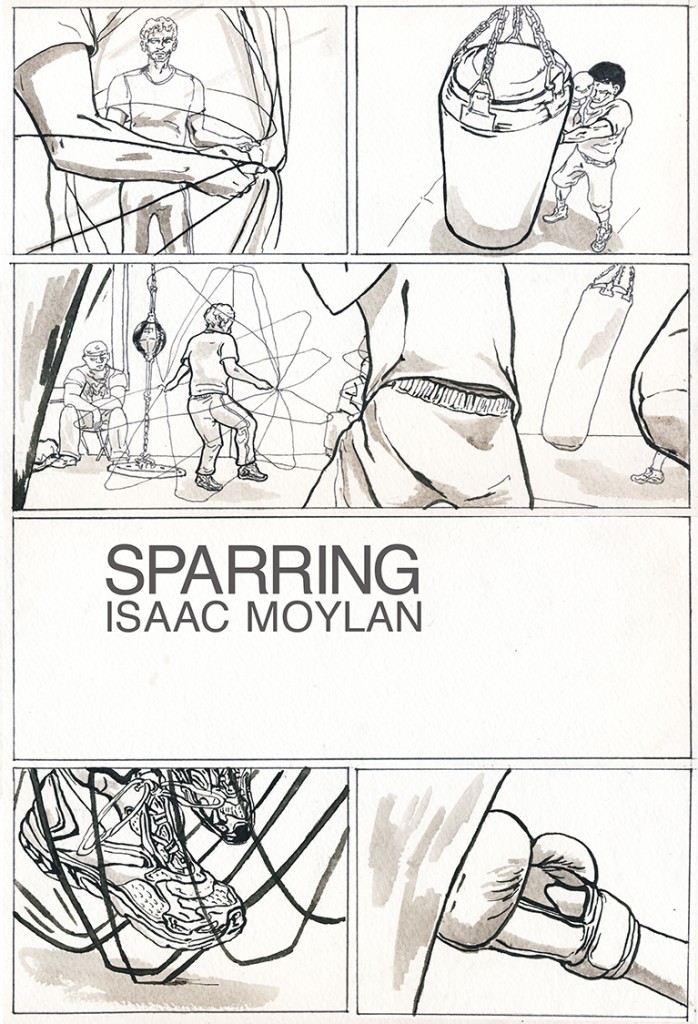
* Ben Max F. Urkowitz made a very nice comic here — a little Tim Hensley, a little Gilbert Hernandez, a little pre-Maus Art Spiegelman even. Click to read the whole thing.
* Go buy a whole bunch of troubling, compulsively drawn comics by Heather Benjamin, who’s really got everyone else in comics beat in terms of interview attire and candidness.
* Uno Moralez gif/image gallery gloriousness.
* Once you’ve learned the grim true story behind the making of The Birds, this gif, which I’ve thought for years and years now is Hitchcock’s single most revealing-of-self moment, takes on an even more troubling new meaning.
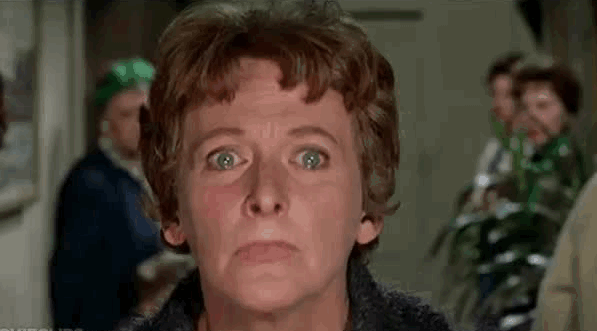
* I once wrote an oral history of Marvel Comics with a 13,000-word first draft for Maxim, yet I’m still absolutely enthralled and regularly enlightened by the clips I’ve read from writer Sean Howe’s forthcoming book Marvel Comics: The Untold Story. Here’s a bit on the ’90s boom and Image defection, and here’s a justifiably internet-famous bit on the freewheeling, acid-dropping ’70s.
* In her Bloggingheads.tv show “Critic Proof,” Alyssa Rosenberg, who is one of my favorite TV critics, talks to Willa Paskin and Todd VanDerWerff, who are two of my favorite TV critics. Paskin is just a mercilessly efficient and effective critic, man, jeez.
* I’m looking forward to listening to four excellent comics talkers, Tucker Stone, Matt Seneca, Joe McCulloch, and Chris Mautner, talk about Love and Rockets at length in their podcast.
* Vanessa Pelz-Sharpe is probably the best sex writer I’ve ever read. Her advice in that post makes for excellent sex scenes in addition to excellent sex IRL, too.
* Please read this marvelous, harrowing true story about the coolest kids in the author’s hometown. Blood Sugar Sex Majik is a hell of a drug. (Via Molly Lambert.)
* Ta-Nehisi Coates presents an escaped slave’s furious response to an infuriating letter from his ex-master’s wife demanding he pay for the horse he rode off on. Incandescent writing.
* Coates is actually responsible for some of the best political writing I’ve read in ages himself: “Fear of a Black President”, his magisterially angry essay on the reaction to the Obama presidency that dare not speak its name.
* Conor Friedersdorf on the debilitating psychological effects of living life in constant terror of American drone attacks. Think about this every day, please.
* I don’t really know Zak Smith beyond liking his writing on gaming, art, and fiction and exchanging the occasional tweet or comment, and I don’t know his girlfriend Mandy Morbid at all, so I felt weird trying to talk to either of them about the issues raised in this post directly, so instead I’ll tell you to read Zak’s profoundly moving and blunt post on Mandy’s chronic, intensifying illnesses and living with death as a presence in your life and leave it at that.
* A very happy belated birthday to Jack Kirby, the King of Comics and one of the greatest artists, of any kind, of the 20th century. That link takes you to this year’s Kirby tribute gallery by Tom Spurgeon, an annual comics-internet highlight.
* Finally, I like Beyoncé.
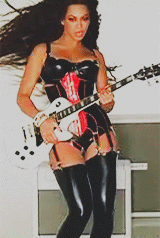
“Boardwalk Empire” thoughts, Season Three, Episode Four: “Blue Bell Boy”
October 9, 2012* Hey, it’s Al Capone! Glad to see him again. I’m a mob nerd, yes, but beyond that I find myself enjoying the show’s presentation of him as…well, you know in the commercials for Honey, I Blew Up the Baby where they have shots of the giant toddler wandering around the city like Godzilla? That’s kind of Capone on this show: an overgrown third-grader, sweet in many ways and funny in many other ways but also not at all someone you’d want to entrust with power over life and death.
* Eli’s great…? Am I really saying that? I never thought much of that character before, to be honest, but quiet, humbled, older-and-wiser is a much better look for him than resentful kid brother. Literally a better look for him, in fact: Shea Whigham’s severity is engrossing to behold. So I’m glad to see him as well.
* And I’m glad to see Owen’s girlfriend again too KNOWHATIMSAYIN
* And at least this time they gave us some attractive male nudity too! Alright, it was from a distance and out of focus, but still, beggars can’t be choosers.
* Fuck nuns, fuck Catholicism — not just annoying, but boring from a dramaturgical standpoint. That scene with Margaret and the smarmy doctor trying to get the nun to agree to use the word “vagina” was precisely the sort of self-congratulatory empty-calorie “LOL the past, aren’t you and I glad we’re so far beyond that now” progressivism porn that Mad Men is often accused of but rarely actually indulges in.
* Man, look at the chipped paint and wood rot on the doors and shutters at the thief’s place. Gorgeous. This show’s attention to detail is seamless.
* Wonderful camerawork in that house, too, from the initial scene of Nucky and Owen winding their way through the labyrinth of liquor through all the cat-and-mouse business with the prohies.
* Nucky resents Owen for not being Jimmy. Not being Jimmy didn’t do young Roland Smith any favors, either. Nuck’s not in the protégé market, not anymore.
* I’m not one for plotting the future course of the shows I watch, but I do wonder if the solution to the Gyp Rosetti situation is for Nuck to loose Richard Harrow on him, and if perhaps setting that up was the purpose of their run-in last week.
* How about the way the massacre was treated, huh? Heard from a distance as Eli sits powerless to stop it, then a god’s eye view of the aftermath? And how about those closing shots of the boardwalk, luminously artificial? I maintain my belief that the show is more than just eyecandy, because there’s nothing just about it.
* That said, Chris Allen responded to my recent enthusiasm for the show by writing one of the better rebuttals to such things I’ve come across in a long time, so, equal time. His comment made me think of three things:
* This is Margaret’s least interesting storyline yet, and that’s saying something.
* I think the simplicity of Gyp’s threat is what makes it threatening, or at least that’s how the show is presenting it. There’s nothing to be outfoxed here — just a supremely well-armed lunatic who picked the right location to make trouble.
* I’m curious if the seemingly tangential Capone and Luciano/Lansky/Siegel storylines are going to remain separate now. Game of Thrones opened that door and I wonder if more shows will step through.
The Boiled Leather Audio Hour fulfills the ancient prophecy
October 9, 2012Episode 14 of my A Song of Ice and Fire podcast, The Boiled Leather Audio Hour, is now up. This one is about the impact of prophecy within the world of the story itself, as per some really insightful writing by my co-host Stefan Sasse. Give it a listen!
The Gilbert Hernandez spotlight panel at SPX
October 8, 2012I hosted Gilbert Hernandez’s panel at the Small Press Expo, and here it is! I haven’t listened to it yet — how did it go?
I learned things I didn’t know before, and that’s a wonderful way to leave a panel you’re hosting.
“Homeland” thoughts, Season Two, Episode Two: “Beirut Is Back”
October 7, 2012For my review of tonight’s episode of Homeland, please visit Rolling Stone. Uh, how about that ending?
Enter the Truth Zone
October 7, 2012I’m proud to announce that Hottest Chick in the Game (which I wrote) and, “uh…,” Stoner Alien (which I sometimes write) have made Mogg’s personal reading list in Simon Hanselmann’s Truth Zone.
Stoner Alien: heavy hitting
October 4, 2012My latest contribution to Stoner Alien is up. Asking the hard questions.

